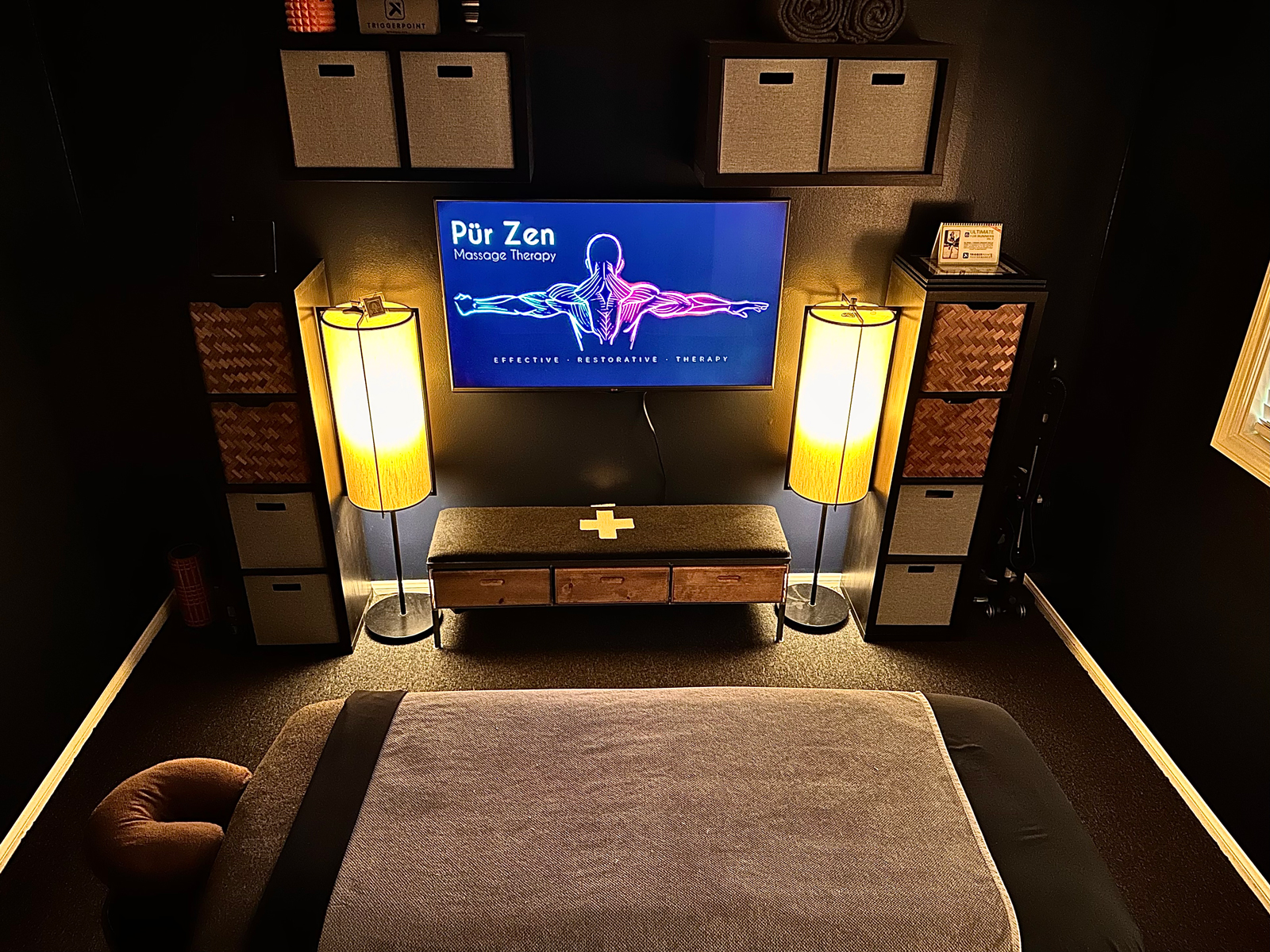Pricing
Services and Rates
CONVENIENTLY LOCATED
Massage Studio
60 Minutes
- This is for those individuals who need specific detailed work in one area such as the back, neck, and shoulders.
- This is NOT for those looking for the therapist to address the full body (90 minutes is needed at the minimum to address the entire body).
90 Minutes
- This session length is great for those that either want a general full body session with no specific issues or for those that want extreme detail on one specific area that have focused issues needing addressed.
120 Minutes
- This is for individuals that have many issues to address, want a complete overhaul on making sure everything is addressed, or to pay homage to taking care of your body for beating it up day to day!

OUTCALLS AVAILABLE TOO
Massage at Your Location
Certified and LICENSED
Modalities, Techniques, and Tools
The following is a list of modalities, techniques, and tools the therapist is trained in, with a brief definition.
Deep Tissue Massage
Techniques that utilize deep-tissue/deep-muscle massage are administered to affect the sub-layer of musculature and fascia. These techniques require advanced training and a thorough understanding of anatomy and physiology. The muscles must be relaxed in order to effectively perform deep-tissue massage, otherwise tight surface muscles prevent the practitioner from reaching deeper musculature. It helps with chronic muscular pain and injury rehabilitation and reduces inflammation-related pain caused by arthritis and tendonitis. It is generally integrated with other massage techniques.
NEUROMUSCULAR MASSAGE
Neuromuscular massage techniques are medical in nature. The manual therapy techniques are highly-specialized and are designed to correct pain and movement dysfunction by treating trigger points, muscle adhesions, and connective tissue patterns. The problems are normally caused by a specific trauma, repetitive movements or even bad posture. Neuromuscular massage is considered an ongoing treatment – not just something a person does whenever they feel a bit achy.
SPORTS MASSAGE
Sports massage is designed to enhance athletic performance and recovery. There are three contexts in which sports massage can be useful to an athlete: pre-event, post-event, and injury treatment. Pre-event massage is delivered at the performance site, usually with the athlete fully clothed. Fast-paced and stimulating, it helps to establish blood flow and to warm up muscles. During the massage, the athlete generally focuses on visualizing the upcoming event. Post-event massage is also delivered on site, through the clothes. The intent here is to calm the nervous system and begin the process of flushing waste products out of the body. Post-event massage can reduce recovery time, enabling an athlete to resume training much sooner than rest alone would allow. When an athlete sustains an injury, skillful massage therapy can often speed and improve the quality of healing.
PRENATAL MASSAGE
Prenatal massage differs from a traditional one: Studies have found that moms-to-be can reap both mental and physical rewards from prenatal massage. Massage therapy performed during pregnancy can reduce anxiety, decrease symptoms of depression, relieve muscle aches and joint pains, and improve labor outcomes and newborn health. Other common benefits of prenatal massage include: Reduced back & joint pain, Improved circulation, Reduced edema (swelling), Reduced muscle tension and headaches, reduced stress and anxiety, improved oxygenation of soft tissues and muscles, and better sleep.
TRIGGER POINT THERAPY
Trigger point therapy is used to relieve muscular pain and dysfunction through applied pressure to trigger points of referred pain. These points are defined as localized areas in which the muscle and connective tissue are highly sensitive to pain when compressed. Pressure on these points can send referred pain to other specific parts of the body.
STRUCTURAL INTEGRATION
Structural integration is based on the idea that the entire structural order of the body needs to be realigned and balanced with the gravitational forces around a central vertical line representing gravity’s influence. Therapeutic intervention is directed toward the myofascial system–the ligaments, muscles, tendons, and surrounding connective tissues. A session of work, in which different angles and degrees of physical pressure are used to stretch and guide fascia to a place of easier movement. The process is not intended to cure symptoms; its goal is to create a more resilient, higher-energy system, free of inhibitions due to past trauma.
MYOFASCIAL RELEASE
Myofascial release is the three-dimensional application of sustained pressure and movement into the fascial system in order to eliminate fascial restrictions and facilitate the emergence of emotional patterns and belief systems that are no longer relevant or are impeding progress. First, an assessment is made by visually analyzing the human frame, followed by the palpation of the tissue texture of various fascial layers. Upon locating an area of fascial tension, gentle pressure is applied in the direction of the restriction. Myofascial release is an effective therapeutic approach in the relief of cervical pain, back pain, fibromyalgia, scoliosis, neurological dysfunction, restriction of motion, chronic pain, and headaches.
SWEDISH MASSAGE
One of the most commonly taught and well-known massage techniques, Swedish massage is a vigorous system of treatment designed to energize the body by stimulating circulation. Five basic strokes, all flowing toward the heart, are used to manipulate the soft tissues of the body. The disrobed client is covered by a sheet, with only the area being worked on exposed. Therapists use a combination of kneading, rolling, vibrational, percussive, and tapping movements, with the application of oil, to reduce friction on the skin. The many benefits of Swedish massage may include generalized relaxation, dissolution of scar tissue adhesions, and improved circulation, which may speed healing and reduce swelling from injury.
CANCELLATION AND LATE ARRIVAL POLICY
Call to cancel more than 24 hours in advance.
The full fee will be charged for any missed appointments without a full 24-hour cancellation notice given by phone only. Email notice will not suffice.
Thank you for your understanding.
